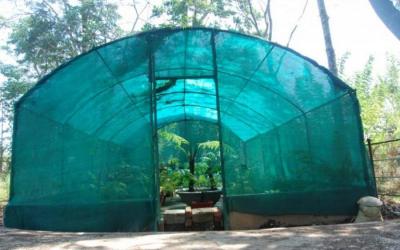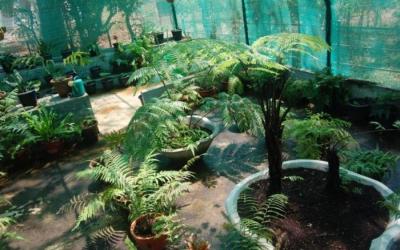Establishment of a Fern House
Ferns and ferns allies together form the division, Pteridophyta. The name ‘pteridophyta’ was derived from the Greek words, ‘pteron’ and ‘phyta’ which means feather like and plant respectively. This group of plants is characterized by the circinate vernation of fronds (not in fern allies) and presence of sporangia in fronds. The life cycle is also characterised by alternation of sporophytic stage with gametophytic stage. The gametophytic stage (prothalus) is independent, unlike dependent in the case of bryophytes.
Species collected and maintained in Fern House of College of Forestry
A separate Fern House was established under this project. A 55.08 m2 shade house was specifically built for maintaining the fern collections. A total of 81 pteridophytes has so far been collected and maintained in the Fern House. This also includes a few fern allies. The list of the species collected and which could be conclusively identified (16 ferns upto the species level and 14 upto the genus level) are listed below.
- Adiantum lunulatum
- Blechnum colenso
- Bortrychium marticariifolium
- Vittaria elongate
- Parahemionitis cordata
- Osmunda regalis
- Adiantum latifolium
- Adiantum peruvianum,
- Adiantum aethiopicum
- Adiantum hispidulum
- Acrostichum aureum
- Cyathea gigantea,
- Selaginella rupestris
- Angiopteris evecta
- Marselia minuta
- Ceratopteris thalictroides
- Equisetum sps
- Selaginella sps
- Bolbitis sps
- Nepenthes sps
- Lygodium sps
- Arachniodes sps
- Antrophyum sps
- Aspleniu sps
- Cheilanthes sps
- Loxogramme sps
- Microsorum sps
- Huperzia sps
- Diplazium sps
- Christella sps.
More than 40 pteridophyte species are yet to be identified. The process of identification of the same is continuing. A solar powered fogging facility has been installed in the Fern House to irrigate the collections.






